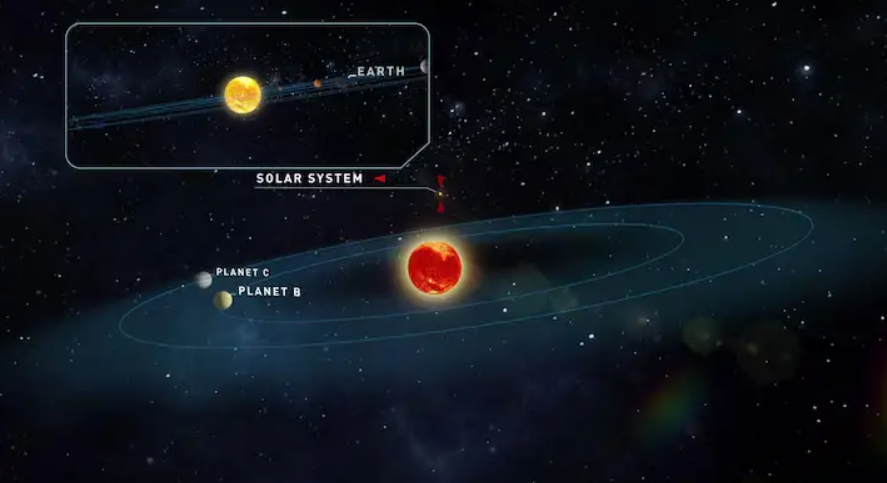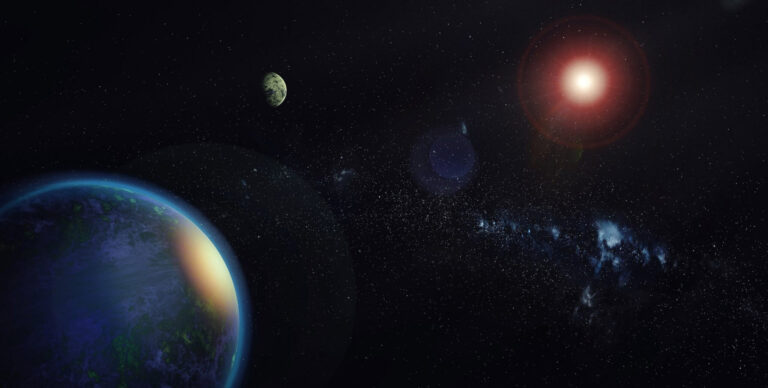Two Potentially Habitable Planets Discovered Orbiting a Star Only 12 Light Years Away
Two Earth-Like Planets Found Orbiting Nearby Star, Could Hold Liquid Water and Support Life
Just 12 light-years from Earth, astronomers have found two rocky planets circling Teegarden’s star. The similarity in mass to Earth and potential habitability conditions of these planets raise the exciting possibility of liquid water. Stable and peaceful, Teegarden’s star contrasts with other red dwarfs that flare violently, raising the likelihood that these planets could support life. Since the star is above 8 billion years old, these planets could have had plenty of opportunity for life to emerge. Scientists employ advanced telescopes to investigate if these planets might support extraterrestrial life at this time.
The revelation of two Earth-similar planets orbiting a distant small star only 12 light-years from us has thoroughly thrilled astronomers. Should they be confirmed, their orbits may permit liquid water, which could raise their habitability chances.
Teegarden’s star is about 8 billion years old and is almost twice as old as our sun. This would mean that the planets could be very old, therefore, offering a significant timeline for prospective life evolution. In particular, the star is exhibiting no indications of the violent flares usually associated with stars of its type.
Being stable and near, the Teegarden system is an obvious choice for astronomers who will be searching for indications of alien life with next-generation telescopes.
“Both Teegarden planets have the capability to support life,” remarks Ignasi Ribas, who represents the Institute of Space Studies of Catalonia. “We will soon find out if they are really habitable or if they might already have inhabitants.”
Small but Mighty
The faintness of the star was such that it escaped notice until 2003, when NASA astrophysicist Bonnard Teegarden found it while sifting through astronomical data for nearby dwarf stars that had not been seen before.
Only 9 percent of the sun’s mass characterizes Teegarden’s star. As an ultra-cool M dwarf, it mainly discharges infrared light much like the star TRAPPIST-1, which supports seven rocky planets. Being three times nearer to Earth than TRAPPIST-1, Teegarden’s star is an excellent candidate for enhanced research.

Illustration by Andreas Hougardy, University of Göttingen
Ribas and his partners are exploring planets around 342 small stars, with priority given to Teegarden’s star, by using the CARMENES instrument at Spain’s Calar Alto Observatory.
Over three years, the project CARMENES tracked the motions of the star while looking for indications of planets in orbit. Through more than 200 observations, the team found two small planets, each about 1.1 times the mass of Earth. The researchers estimate a 4.9-day orbit for the first planet, Teegarden’s star b, and a 11.4-day orbit for the second planet, Teegarden’s star c, around the star.
A Calm Star
The researchers had to eliminate other variables, such as star spots and flares, that may behave similarly to signals produced by planets, prior to confirming their presence. This is particularly hard with red dwarf stars, which are generally quite active. The unusual peacefulness of Teegarden’s star makes it simpler to identify real planetary signals.
“Such a high number of observations coupled with the stability of the star means that there is hardly another explanation,” says Ribas. I have confidence that these planets exist. I’d bet my fingers on it.”
According to Lauren Weiss, from the University of Hawaii, ‘These planets appear to be solid candidates to me.’ “Quality of the data appears to be very good.”
Weiss highlights a few uncertainties, however. In this instance, researchers are unclear about the rotation cycle of Teegarden’s star, a signal that could erroneously appear planetary in nature.
“The star’s rotation can, at best, only simulate the orbit of one planet, implying that at least one planet is most likely real,” she explains.
Weiss points out that the stars could have the planets orbiting them quicker than had been assumed, which could affect their habitability.
“This is a minor technical issue,” Weiss adds. “Even if their orbital periods are slightly off, they’re still planets.”
Do not forget to share your opinion with us to provide you with the best posts !




0 Comments